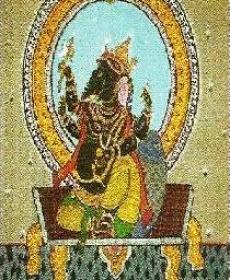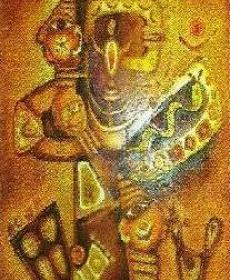Contemporary Art
You are here
Contemporary Art
The contemporary art movement in Odisha is of quite recent origin as eleswhere in India. Although Odisha has had her own indigenous school of painting the contemporary art movement is certainly not the evolution of traditional school of painting. It reflects a host of styles with interplay of influences and cross influences which have been sedimented in different regional schools of art. It is needless to say that the present art movement in Odisha or elsewhere in the country vibrate with atmospheric cross currents prevalent in our society. The most recent art movements hoverns on a school in conformity with international art standards.
The contemporary art gallery in the Odisha State Museum has been organized by the Odisha Lalit Kala Akademi. Here in this gallery attempts have been made to represent all the branches of art in different media, viz., oil, water colour, collages, graphics and sculptures. The collection also includes the traditional pieces of stone carvings, palmleaf drawings and Pata paintings, etc.
Precisely the whole set of exhibits can be viewed in three sequential phases in relation 'to the artists. The early phase represents older generation of artists most of whom are dead. They can be termed as the old masters of the contemporary Odishan art. The pioneers in this group are Bimbadhar Varma, Gopal Kanungo, Basant Panda,Bipinbehari Choudhury, Sridhar Mahapatra, Simhadri Maharana and Durga Prasad pattnaik. The middle phase represents a group of artists who are slowly entering into individual schooling with striking exceptions. They are Muralidhar Tali, Alit Kesori Ray, Bipracharan MohantY, Ananta Panda, Binod Routray, Rabinarayan Nayak. Shyamsunclar Pattnaik, Udayanarayan Jena. Lakshmidhar Das, Baishnab Charan Sarna!, etc. and the later phase consists of comparatively young artists like Jatin Das Prafulla Mohanty, Siba Panigrahi, Jagdish Kanungo, Harish Chandra Singha Babu, Chandrasekher Rao and Dinanath Pathy. The contemporary paintings of Odisha had yet to develop a distinct style. The works of the artists belonging to these three groups find place in the gallery.
Broadly the exhibits can be classified into western academic consisting of oil and water colour portraits, land scapes, sketches and gra-phics with western perspective anatomy, play of light and shade, etc. The revivalistic or oriental group of works are temporary, water colour washes like drawing with old Indian methods of colour applications, conventional forms, etc. In the modern school of works are included the ex¬perimental type of works in oil, water colours collages, graphic and sculptures. The traditional Odishan school centres round Pata paintings, Palmieaf drawings and stone carvings, etc.


